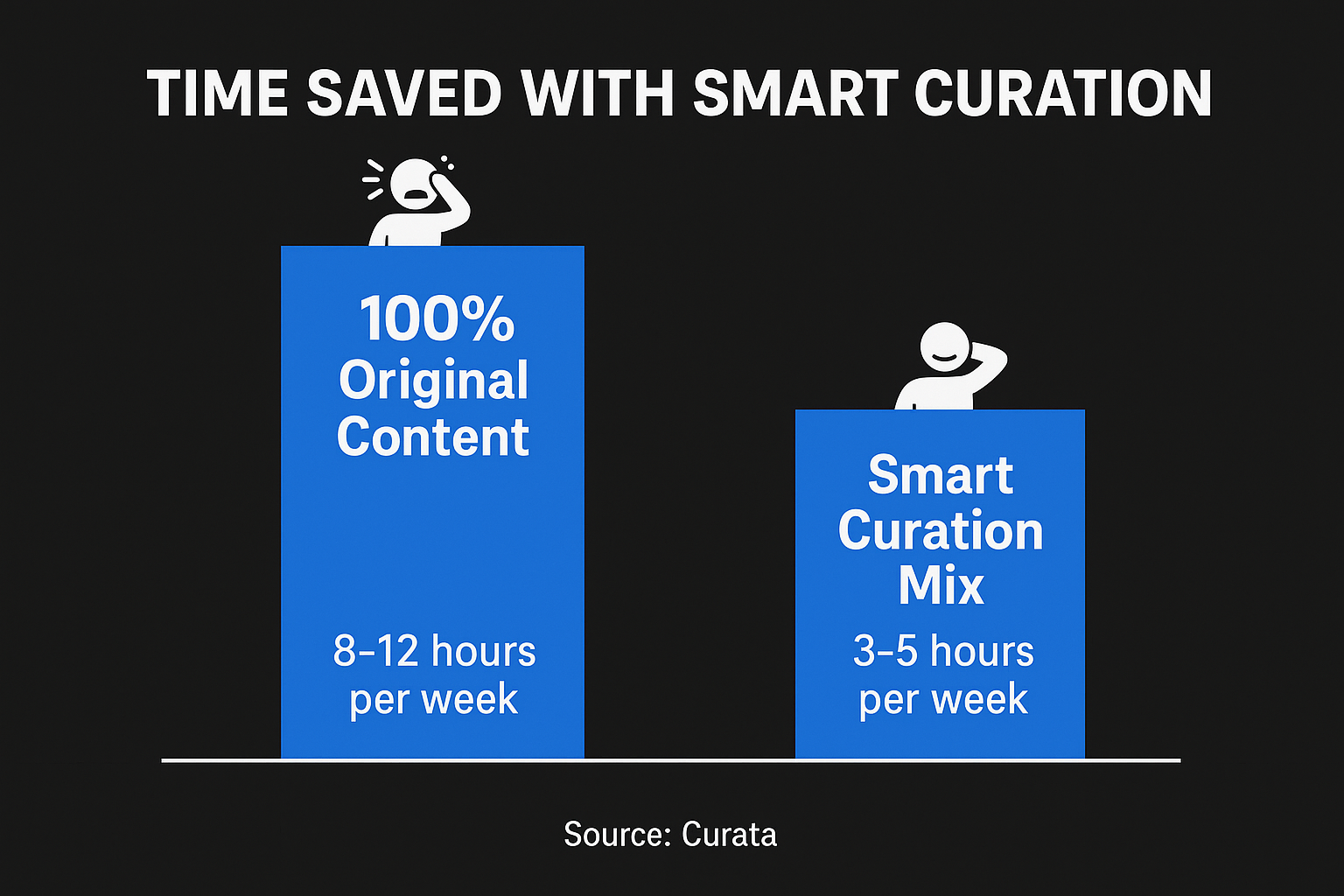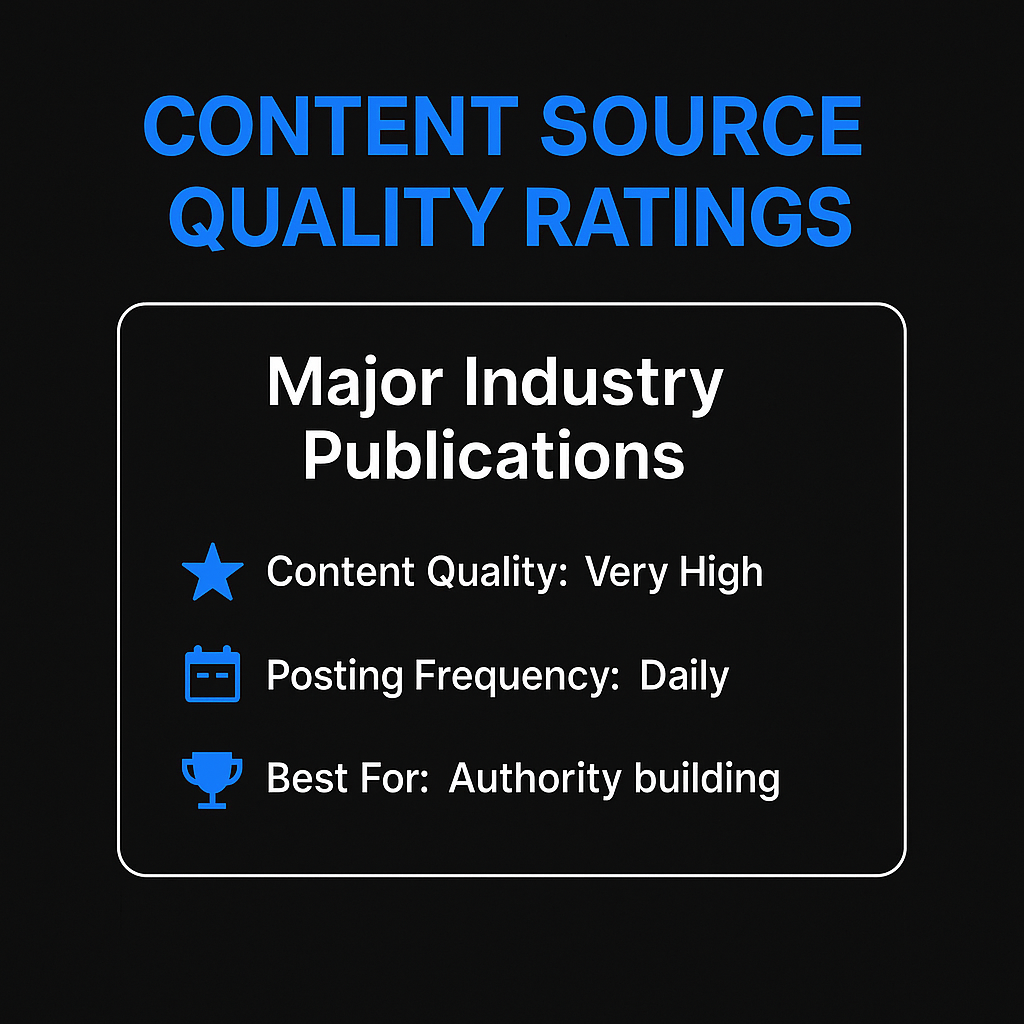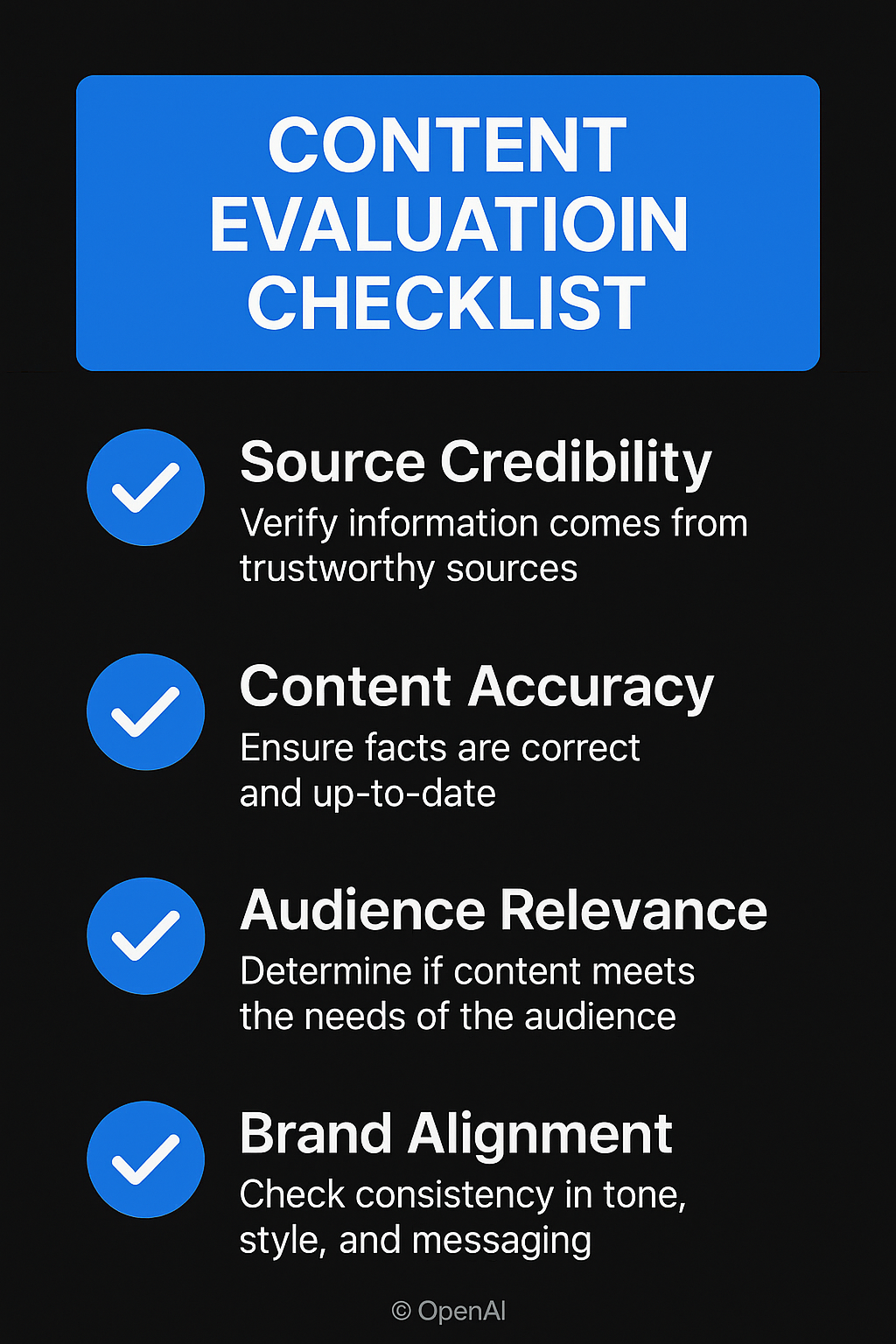How to find great content to share on social media
Scrolling through your phone at 2 AM looking for something—anything—to post tomorrow? We get it. Finding great content to share on social media feels like searching for a needle in a haystack made of cat videos and questionable life advice. You know your audience deserves better than recycled memes, but where exactly do you find those golden nuggets that actually get people talking?
The truth is, most marketers spend way too much time hunting for content when they could be building relationships with their audience instead. Smart content curation isn’t about becoming a full-time internet detective—it’s about knowing where to look, what to grab, and how to make it work for your brand. We’re going to show you exactly how to build a content-finding machine that keeps your feeds fresh without eating up your entire day.
Why Content Curation Beats Creating Everything From Scratch
Here’s something that might blow your mind: you don’t need to create every single piece of content your audience sees. In fact, the smartest brands mix original content with carefully curated pieces from other sources, and there’s solid science behind why this works so well.
Content curation saves you massive amounts of time while actually improving your content quality. Instead of staring at a blank screen wondering what to write about, you’re building on ideas that are already proven to resonate with audiences. Plus, sharing quality content from others positions you as someone who’s plugged into your industry—not just talking about yourself all the time.
The magic happens when you add your own spin to curated content. You’re not just reposting; you’re providing context, insights, and your unique perspective. This approach helps you maintain a consistent posting schedule while giving your audience valuable content they might have missed otherwise. Our content curation benefits guide breaks down exactly how this strategy amplifies your reach.
| Content Creation Approach | Time Investment | Consistency Level | Audience Variety |
|---|---|---|---|
| 100% Original Content | 8-12 hours per week | Often inconsistent | Limited to your expertise |
| Smart Curation Mix | 3-5 hours per week | Highly consistent | Diverse industry perspectives |
| Random Sharing | 1-2 hours per week | Very inconsistent | No strategic value |

The Best Places to Discover Share-Worthy Content
Now that we’ve convinced you that curation is your friend, where exactly do you find this magical content? The internet is vast, but there are specific goldmines where high-quality, shareable content lives and breathes.
Start with industry publications and thought leaders in your space. These sources consistently produce content that’s already been vetted by editors and proven to engage professional audiences. Follow key influencers on LinkedIn and Twitter—they’re often the first to share breaking news and trending topics that matter to your audience.
Don’t overlook niche communities and forums where your target audience hangs out. Reddit, specialized Facebook groups, and industry-specific forums are treasure troves of real conversations about the challenges your audience faces daily. The content that gets upvoted and shared in these spaces is pure gold for understanding what resonates.
Industry Publications and News Sources
Trade publications remain one of the most reliable sources for quality content. They employ professional writers and editors who understand your industry’s nuances. Publications like Harvard Business Review, TechCrunch, or industry-specific magazines consistently produce content that sparks meaningful discussions.
| Content Source Type | Content Quality | Posting Frequency | Best For |
|---|---|---|---|
| Major Industry Publications | Very High | Daily | Authority building |
| Thought Leader Blogs | High | Weekly | Perspective sharing |
| Research Reports | Very High | Monthly | Data-driven posts |
| Community Discussions | Variable | Continuous | Real-world insights |

Social Media Platforms as Content Sources
Each social platform has its own content ecosystem worth exploring. Twitter’s real-time nature makes it perfect for breaking news and quick insights, while LinkedIn’s professional focus yields thoughtful long-form content. Instagram and TikTok excel at visual content that tells stories in ways traditional articles can’t match.
The key is understanding each platform’s strengths and how content performs differently across channels. A viral TikTok video might translate perfectly to an Instagram Reel but need significant adaptation for LinkedIn sharing. (Source: Premiere Creative)
Content Aggregation Tools and Platforms
Smart marketers use tools to automate the heavy lifting of content discovery. Platforms like Feedly and BuzzSumo help you track trending topics and monitor competitor content strategies. These tools save hours of manual searching while ensuring you never miss important industry conversations.
For those serious about content curation, specialized platforms like Quuu use AI to match content suggestions with your brand voice and audience interests. This approach takes curation from random sharing to strategic content planning that actually moves the needle on your engagement metrics.
How to Evaluate Content Before Sharing
Not all content is created equal, and your reputation depends on what you choose to amplify. Before hitting that share button, run potential content through a quick quality filter that protects your brand while ensuring your audience gets valuable information.
Start with the source credibility check. Is this coming from a reputable publisher, verified expert, or established brand? Random blog posts from unknown sources might contain factual errors or biased viewpoints that could reflect poorly on your judgment. When in doubt, cross-reference information with multiple sources.
Next, consider relevance and timing. Just because content is high-quality doesn’t mean it’s right for your audience or timely for your current marketing goals. The best curated content connects directly to your audience’s current challenges or interests while supporting your broader strategic objectives.
| Evaluation Criteria | Green Light | Proceed with Caution | Hard Pass |
|---|---|---|---|
| Source Credibility | Verified publisher/expert | Lesser-known but cited sources | Anonymous or questionable source |
| Content Accuracy | Fact-checked, cited data | Opinions clearly labeled | Unsubstantiated claims |
| Audience Relevance | Directly addresses audience needs | Tangentially related | Off-topic or irrelevant |
| Brand Alignment | Supports your values/voice | Neutral stance | Contradicts brand values |

Checking for Factual Accuracy
In our era of rapid information sharing, fact-checking has become a crucial skill for content curators. Look for articles that cite their sources, especially when sharing statistics or research findings. Be especially cautious with sensational headlines or claims that seem too good (or bad) to be true.
Use tools like Snopes or FactCheck.org for potentially controversial content. When sharing research or data, try to link back to the original source rather than secondary reporting, which can sometimes misinterpret findings.
Understanding Copyright and Fair Use
Sharing content ethically means understanding the difference between fair use and copyright infringement. Generally, sharing a headline and brief excerpt with proper attribution falls under fair use, especially when you’re adding commentary or analysis. However, reposting entire articles or large portions without permission crosses ethical and legal lines.
Always credit original sources and link back to the full article. This not only keeps you on the right side of copyright law but also builds goodwill with content creators and publishers. Some publishers explicitly encourage sharing with clear guidelines—when in doubt, reach out and ask for permission.
Creating Your Content Curation Workflow
Random content discovery leads to random results. The brands that consistently share high-quality content have systematic workflows that make curation feel effortless. Building your own workflow starts with understanding how much time you can realistically dedicate to content discovery and how frequently you want to share curated pieces.
A solid workflow typically involves three phases: discovery, evaluation, and scheduling. Most successful marketers batch these activities rather than doing them on-the-fly. You might spend 30 minutes every Monday morning discovering content for the week, then another 15 minutes evaluating and scheduling pieces for optimal posting times.
The key is consistency over perfection. It’s better to share one great piece of curated content weekly than to stress about finding something daily. As your workflow becomes more refined, you’ll naturally speed up while improving your selection quality. Check out our essential curation tools guide for specific platforms that can streamline this process.
| Workflow Step | Time Investment | Frequency | Key Activities |
|---|---|---|---|
| Content Discovery | 20-30 minutes | 2x per week | Scan sources, save interesting pieces |
| Content Evaluation | 15-20 minutes | 2x per week | Quality check, relevance assessment |
| Content Scheduling | 10-15 minutes | Weekly | Write captions, schedule posts |
| Performance Review | 15 minutes | Monthly | Analyze what worked, adjust strategy |

Setting Up Content Alerts and Monitoring
Instead of hunting for content, make it come to you. Set up Google Alerts for key industry terms, competitor names, and trending topics in your space. This ensures you’re among the first to discover breaking news or viral content that your audience will want to discuss.
Social media monitoring tools like Mention or Brandwatch can track conversations happening around your industry keywords. These tools often surface content opportunities before they hit mainstream awareness, giving you a competitive edge in timely sharing.
Organizing and Categorizing Your Finds
Create a simple system for organizing discovered content. Many marketers use tools like Notion or Airtable to create content libraries with categories like “Industry News,” “Educational Content,” “Inspirational Stories,” and “Data & Research.”
Tag content with planned posting dates, target platforms, and preliminary captions. This organizational system becomes invaluable during busy periods when you need qualified content quickly but don’t have time for extensive searching.
Adding Your Unique Voice to Curated Content
Here’s where good curation becomes great curation: adding your distinctive perspective to shared content. Simply reposting with “Great article!” doesn’t provide value to your audience or differentiate your brand. The most engaging curated posts include your commentary, insights, or questions that spark discussion.
Think of yourself as a curator at a museum—you’re not just displaying art, you’re providing context that helps visitors understand and appreciate what they’re seeing. When sharing industry research, explain what the data means for your audience specifically. When posting about trends, connect them to real-world applications your followers can use immediately.
Your commentary is what transforms passive consumption into active engagement (Source: Sprinklr). Ask thoughtful questions, share related experiences, or provide additional resources that complement the original content. This approach positions you as a valuable filter and interpreter, not just another share button.
Writing Compelling Captions and Commentary
Great captions do more than summarize—they create curiosity and encourage action. Start with a hook that makes people want to read more, whether it’s a surprising statistic, provocative question, or counterintuitive statement. Then provide enough context so your audience understands why this content matters to them specifically.
End with a clear call-to-action that invites engagement. Instead of generic “What do you think?” try specific questions like “Have you seen this trend affecting your industry?” or “What’s been your experience with this approach?” Specific questions generate more thoughtful responses and better discussions.
- Hook with surprise: “This study flips conventional marketing wisdom on its head…”
- Provide context: “Here’s what this means for small businesses struggling with limited budgets…”
- Share perspective: “In our experience working with 500+ clients, we’ve seen…”
- Ask specifically: “Which of these three strategies have you tried, and what were your results?”
- Offer value: “Saving this for our next team meeting—comment if you want our implementation template”
Connecting Content to Current Events or Trends
The most shareable curated content connects timeless insights to timely moments. When major industry news breaks, look for older content that provides context or different perspectives on the situation. This approach shows you understand both the immediate headlines and the deeper implications.
Seasonal connections also work brilliantly. Sharing productivity tips during busy holiday seasons, or financial advice around tax time, demonstrates that you understand your audience’s current mindset and challenges. This timing awareness can dramatically increase engagement rates compared to sharing the same content during neutral periods.
Measuring the Success of Your Curated Content
What gets measured gets improved, and content curation is no exception. The metrics that matter most depend on your goals, but generally you’ll want to track engagement rates, click-throughs to original sources, and how curated content performs compared to your original posts.
Pay attention to which types of curated content generate the most meaningful engagement. Are industry news pieces sparking debates while educational content drives more saves and shares? Understanding these patterns helps you refine your curation strategy over time for maximum impact.
Don’t just track vanity metrics like likes and shares—focus on quality indicators like comment depth, profile visits, and website traffic generated from curated posts. These metrics better reflect whether your curation strategy is building genuine relationships and driving business results. Our content marketing metrics guide explains which numbers actually matter for long-term success.
| Metric Category | Key Indicators | What It Tells You | Ideal Trend |
|---|---|---|---|
| Engagement Quality | Comments per post, discussion depth | Content relevance and interest | Increasing over time |
| Audience Growth | New followers from curated posts | Curation attracting target audience | Steady growth |
| Traffic Generation | Click-throughs to original sources | Title and commentary effectiveness | High initial, stable |
| Brand Association | Mentions, shares of your curated posts | Audience values your perspective | Increasing over time |
Key Performance Indicators to Track
Start tracking these essential KPIs for your curated content: engagement rate (comments + shares / impressions), save rate for platforms that support it, and click-through rate to original sources. These metrics help you understand not just reach, but genuine interest and value perception.
Also monitor the performance of your original commentary versus the shared content itself. If your captions consistently generate more engagement than the linked articles, you might consider creating more original content around similar themes.
A/B Testing Different Content Types
Not sure whether your audience prefers industry news, educational content, or inspirational pieces? Test different content types systematically. Share similar-quality pieces from different categories and compare performance metrics after sufficient time for engagement.
Test different commentary styles too. Try sharing the same article with analytical commentary versus personal storytelling approaches. These experiments reveal what resonates most with your specific audience, allowing you to focus your curation efforts where they’ll have maximum impact.
Tools and Platforms to Streamline Content Discovery
The right tools can transform content curation from a time-consuming chore into an efficient, almost automated process. We’re not talking about expensive enterprise solutions—many excellent curation tools offer free tiers that work perfectly for small businesses and solo marketers.
Content discovery tools fall into several categories: RSS readers for following multiple sources efficiently, social media monitoring tools for tracking conversations, and AI-powered platforms that learn your preferences and suggest relevant content automatically. The key is finding the combination that matches your workflow and budget.
Remember, tools should simplify your process, not complicate it. Start with one or two basic tools and gradually add capabilities as your curation strategy matures. Many marketers find that a simple RSS reader plus one good social media scheduler covers 80% of their needs without overwhelming their budget or workflow.
Free vs. Paid Content Curation Tools
Free tools like Feedly and Buffer’s free tier provide excellent starting points for content curation. These platforms offer core functionality without requiring significant investment, making them perfect for testing whether systematic curation fits your marketing approach.
Paid tools typically offer advanced features like AI content suggestions, detailed analytics, and team collaboration features. Platforms like Quuu use artificial intelligence to match content suggestions with your brand voice and audience preferences, dramatically reducing the time needed for content discovery and evaluation.
AI-Powered Curation Platforms
AI-powered curation represents the future of content discovery. These platforms analyze your past sharing behavior, audience engagement patterns, and brand guidelines to suggest content that’s likely to resonate with your specific audience. The technology is sophisticated enough to understand context, tone, and relevance beyond simple keyword matching.
The best AI curation tools learn from your feedback, becoming more accurate over time. When you skip suggested content or share pieces that perform well, the algorithm adjusts future recommendations accordingly. This creates a personalized content discovery engine that gets smarter with use.
Content Curation Best Practices and Common Pitfalls
Even with the best tools and intentions, certain mistakes can undermine your curation efforts. The most common pitfall? Over-curating relative to original content. Your audience follows you for your perspective, not just your ability to find and share other people’s content.
Another frequent mistake is curating without adding value. Simply sharing links with minimal commentary doesn’t differentiate your brand or provide unique value to your audience. The best curated content includes substantial commentary that’s often more valuable than the original piece itself.
Timing matters more than most marketers realize. Sharing week-old news feels stale, while jumping on every trending topic makes you seem reactive rather than thoughtful. Develop a sense of when to share immediately versus when to let a topic develop before adding your perspective. Sometimes the best curation happens when you’re the voice that makes sense of conflicting information or provides historical context for current events.
Maintaining Authenticity While Sharing Others’ Content
Your curated content should feel authentically you, even when sharing others’ work. This means choosing pieces that align with your values and perspective, then adding commentary that reflects your authentic voice and experience. Don’t share content just because it’s trending if it doesn’t fit your brand or provide genuine value to your audience.
Be transparent about why you’re sharing specific content. “This research validates what we’ve been seeing with our clients” or “This contradicts our usual approach, but the data is compelling” shows thoughtful consideration rather than random sharing. Authenticity in curation means being selective and intentional, not comprehensive.
Balancing Original and Curated Content
Most successful brands maintain a roughly 50/50 split between original and curated content, though this varies by industry and audience preferences. The key is ensuring your original content provides unique value while your curated pieces demonstrate industry awareness and thought leadership.
Use curated content to start conversations that you continue with original follow-up posts. Share an industry report on Monday, then publish your analysis and recommendations on Wednesday. This approach maximizes the value of both content types while establishing you as both well-informed and capable of original thinking.
Finding great content to share doesn’t have to feel like searching for treasure without a map. With the right sources, evaluation criteria, and tools, you can build a content curation system that consistently delivers value to your audience while positioning you as a trusted industry voice. The secret isn’t finding more content—it’s getting better at recognizing and enhancing the content that truly matters to the people you serve.
Start small, stay consistent, and always add your unique perspective to everything you share. Your audience is counting on you to cut through the noise and deliver insights they can actually use. Make every piece of curated content earn its place in their feeds, and you’ll build the kind of engaged community that drives real business results.






